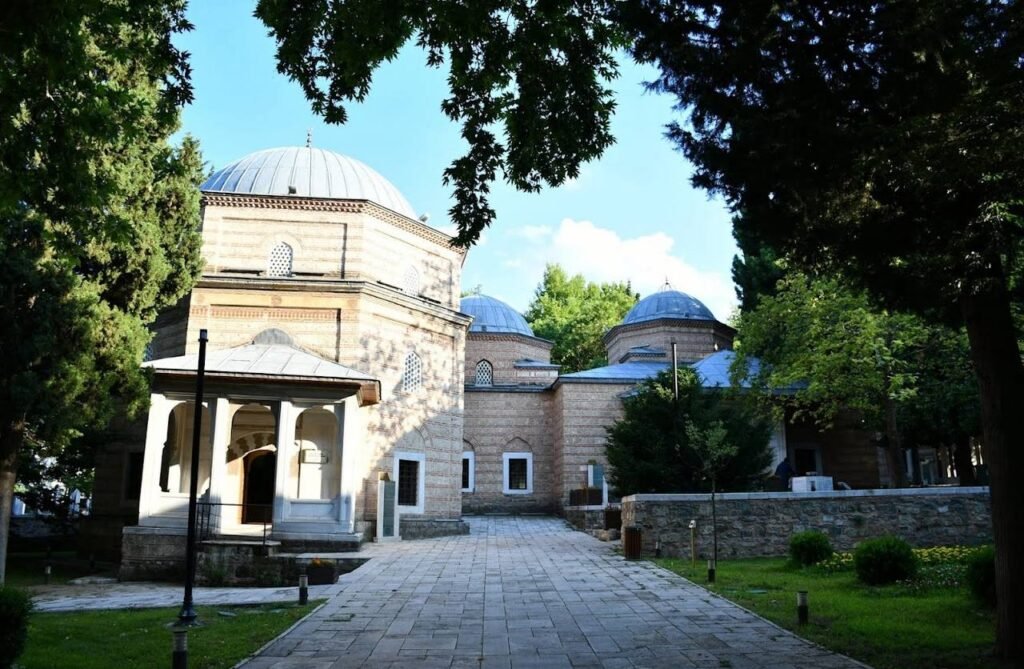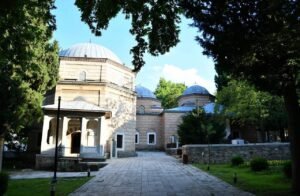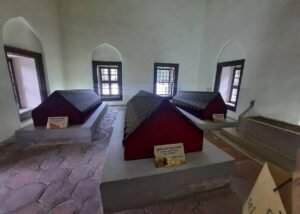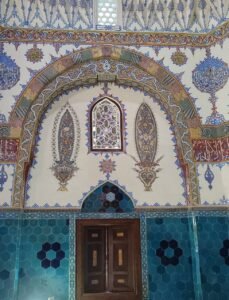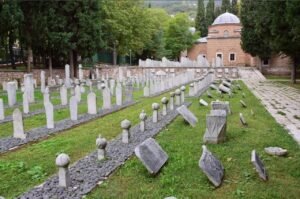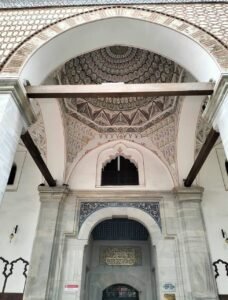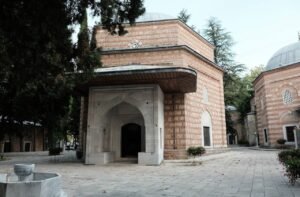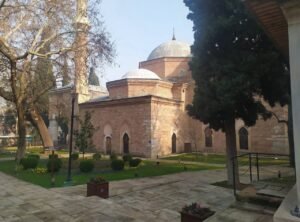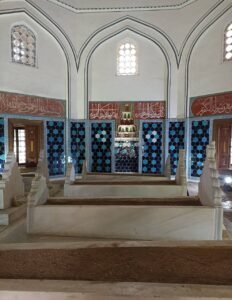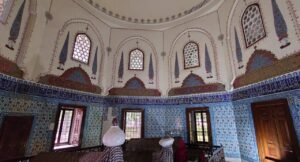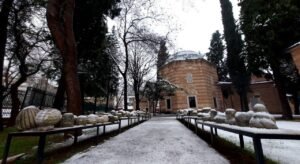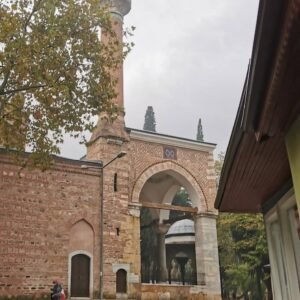Description
Discovering the Muradiye Complex: A Jewel of Ottoman Heritage in Bursa, Turkey
Nestled in the historic city of Bursa, Turkey, the Muradiye Complex (Muradiye Külliyesi) stands as a captivating testament to Ottoman art, culture, and architectural elegance. Built in the 15th century by Sultan Murad II, this serene complex is a must-visit destination for travelers interested in history, spirituality, and architectural grandeur.
A Glimpse into Ottoman Elegance
The Muradiye Complex was constructed in 1426, making it one of the oldest surviving examples of early Ottoman architecture. Sultan Murad II, father of Mehmed the Conqueror, ordered the building of this spiritual and charitable center to serve both the community and the divine. Located in the tranquil Muradiye district of Bursa, the complex reflects the city’s role as the first major capital of the Ottoman Empire before Edirne and Istanbul.
The complex is composed of several integrated structures: a mosque, a madrasa (Islamic school), a hamam (Turkish bath), a darüşşifa (hospital), and 12 mausoleums belonging to members of the Ottoman royal family. Surrounded by cypress trees and garden paths, the ambiance is peaceful and contemplative—a perfect setting for experiencing the Ottoman Empire's refined culture and spiritual traditions.
The Mosque: Centerpiece of the Complex
At the heart of the complex is the Muradiye Mosque, a beautiful example of early Ottoman mosque architecture. The mosque’s single central dome is supported by semi-domes and smaller side domes, creating a harmonious and balanced space. The prayer hall features delicate tile work, hand-painted calligraphy, and finely carved wooden elements.
What truly captures attention is the mihrab, the niche indicating the direction of Mecca. Covered with exquisite Iznik tiles, it glows with hues of blue and turquoise. The mosque is still in use today, serving both locals and visitors, and offers a rare opportunity to experience prayer and reflection in a historic environment.
A Garden of Royal Rest: The Mausoleums
Perhaps the most poignant and visually striking aspect of the Muradiye Complex is its cemetery of royal tombs. This part of the complex houses 12 mausoleums belonging to sultans, princes, princesses, and consorts from the Ottoman dynasty. Among the most notable are the tombs of Şehzade Mustafa, Şehzade Cem, and Gülbahar Hatun.
Each mausoleum is a masterpiece in miniature, reflecting the personal story of its occupant. The tomb of Şehzade Mustafa, the eldest son of Suleiman the Magnificent, is especially moving. Mustafa was executed under suspicion of treason, and his tomb stands as a silent witness to palace intrigue and human tragedy within the royal court.
The interiors are adorned with traditional Ottoman tilework, Koranic inscriptions, and intricate arabesque designs. Some of the tombs have open façades, allowing visitors to view the sarcophagi from outside, while others invite you in to absorb the reverent atmosphere. This section of the complex is particularly valuable for understanding the private and familial side of the Ottoman dynasty—often overshadowed by their military and political might.
The Madrasa and Social Structures
Adjacent to the mosque is the madrasa, where students once studied theology, literature, and science. The building, constructed around a central courtyard with classrooms and a library, has been restored and now serves as a cultural center and exhibition space. It often hosts rotating displays on Islamic art, Ottoman history, and traditional crafts.
Nearby, the darüşşifa, or Ottoman hospital, once offered holistic treatments combining herbal medicine, music therapy, and prayer. Though no longer functioning as a hospital, the building stands as a reminder of the Ottoman emphasis on health and well-being, long before modern medical practices took root in Europe.
The Turkish bath, or hamam, in the complex also reflects the Ottoman concern with hygiene and social interaction. Though it is not operational today, its architecture and layout can still be explored, providing insight into daily life in the 15th century.
Muradiye in Modern Bursa
Today, the Muradiye Complex is one of Bursa's most visited historical sites and a part of the UNESCO World Heritage-listed "Bursa and Cumalıkızık: The Birth of the Ottoman Empire" ensemble. Restoration efforts have preserved its authenticity while making it accessible to modern visitors. English-language signage, guided tours, and a small visitor center make it easy to explore.
The complex is also close to other major Bursa attractions, such as the Green Mosque (Yeşil Camii) and Uludağ Mountain, allowing tourists to incorporate it into a larger itinerary. A leisurely visit to Muradiye can take 2–3 hours and provides both a spiritual and educational experience.
Visitor Tips
-
Best Time to Visit: Spring and autumn are ideal, offering pleasant weather and fewer crowds.
-
Opening Hours: Generally open daily from morning to early evening, but hours may vary on religious holidays.
-
Dress Code: As it is a religious site, modest dress is recommended; women may be asked to cover their heads when entering the mosque.
-
Photography: Permitted, but flash photography is discouraged inside the tombs and mosque.
-
Admission: Most parts are free, though a small donation is appreciated for maintenance.
Final Reflections
The Muradiye Complex is far more than just a historical site—it’s a soulful journey into the heart of Ottoman life, architecture, and devotion. Whether you're a lover of history, an admirer of Islamic art, or a curious traveler in search of deeper meaning, a visit to Muradiye offers profound insight and emotional resonance.
In the quiet shadows of its mausoleums and the delicate lines of its architecture, the past speaks not only of sultans and wars, but also of faith, family, and the enduring beauty of a civilization that once ruled across continents. In every sense, Muradiye is a place to reflect—on history, on life, and on the timeless art of remembrance.
Location
-
Muradiye, Prf. Dr. Halil İnalcık Sk., 16050 Osmangazi̇/Bursa
